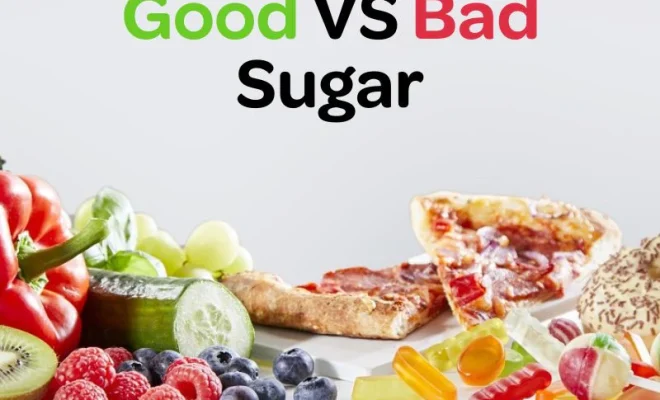Good Sugar vs. Bad Sugar: What’s the Difference?

Introduction
Sugar, a term we have all heard and probably consume in our daily lives, has become the subject of heated debates in the realm of health and wellness. But not all sugars are created equal; there is a distinctive difference between good sugar and bad sugar. In this article, we will explore the contrasts between these two types of sugars, their effects on our bodies, and how to make mindful choices regarding sugar consumption.
Good Sugar vs. Bad Sugar
Good sugar, also known as natural sugar, is found in fruits, vegetables, and other whole foods. Examples include fructose (found in fruits) and lactose (found in dairy products). These sugars are accompanied by fiber, vitamins, minerals, and other essential nutrients that are beneficial to our health.
Bad sugar, on the other hand, refers to added sugars that are used in processed and refined foods. These include table sugar (sucrose), high fructose corn syrup, and other artificial sweeteners. Consuming too much added sugar can lead to a range of health issues such as obesity, diabetes, heart disease, tooth decay, and even certain types of cancer.
So why is there a difference? Fiber is the key player here. In most whole foods containing natural sugars, fiber slows down the digestion process and ensures that the sugar doesn’t cause drastic spikes in blood glucose levels.
Effects on Our Bodies
For our bodies to function properly, we need a certain amount of sugar as it provides energy for our brain and muscles. However, consuming an excess amount of added sugars can have detrimental effects on our overall health.
The primary concern with consuming too much added sugars is its link with metabolic disorders such as obesity and type 2 diabetes. Additionally, excessive added sugar intake has been linked to an increased risk of heart disease due to higher levels of LDL cholesterol (the “bad” cholesterol). Moreover, a high-sugar diet can lead to inflammation, which is a contributing factor to many chronic diseases.
Making Mindful Choices
To lead a healthy lifestyle and avoid the risks associated with excessive sugar consumption, make mindful choices about the foods you eat. Here are some tips:
1. Opt for whole foods like fruits, vegetables, and whole grains instead of processed items loaded with added sugars.
2. Read labels on packaged foods and watch out for hidden sugars with names like glucose, dextrose, invert sugar, maltose, or syrups.
3. Practice portion control when indulging in sugary treats or desserts.
4. Look for healthier alternatives— sweeten your drinks and meals with natural ingredients like honey or maple syrup instead of refined sugars.
Conclusion
Understanding the difference between good sugar and bad sugar is essential for maintaining a balanced diet and leading a healthy lifestyle. By making conscious choices about your sugar intake and opting for natural sources of sweetness, you can enjoy the benefits of energy-rich carbohydrates without jeopardizing your health.






